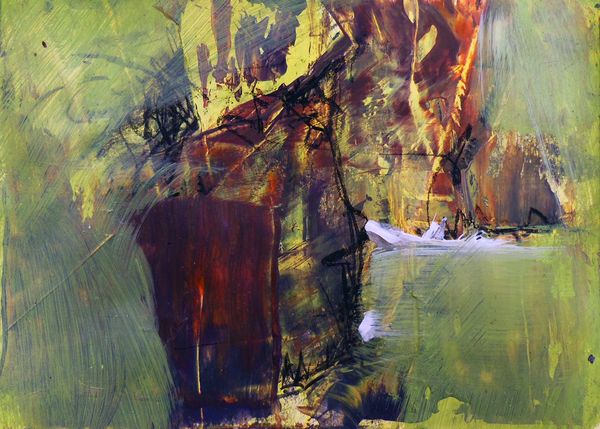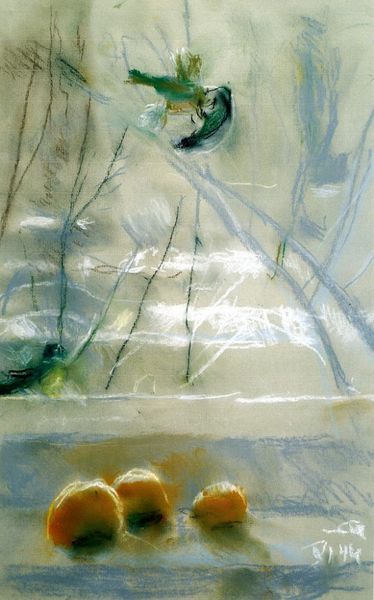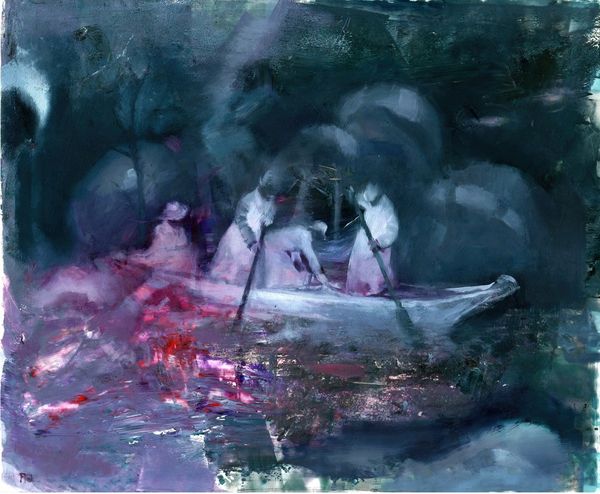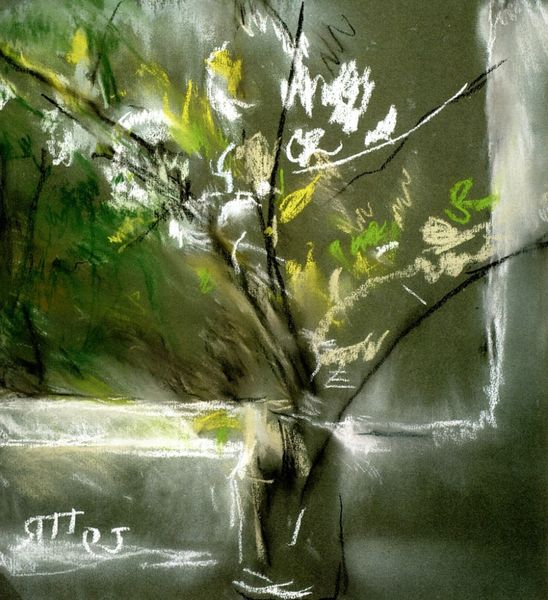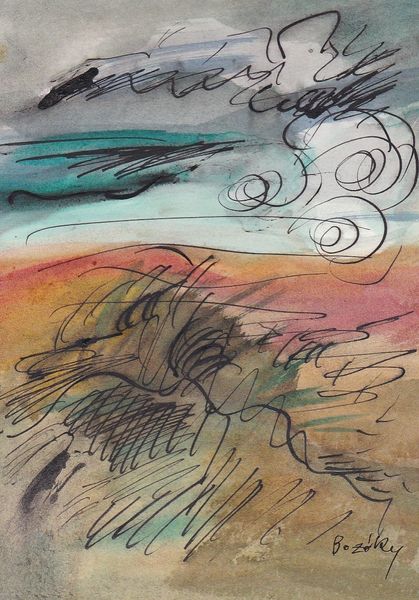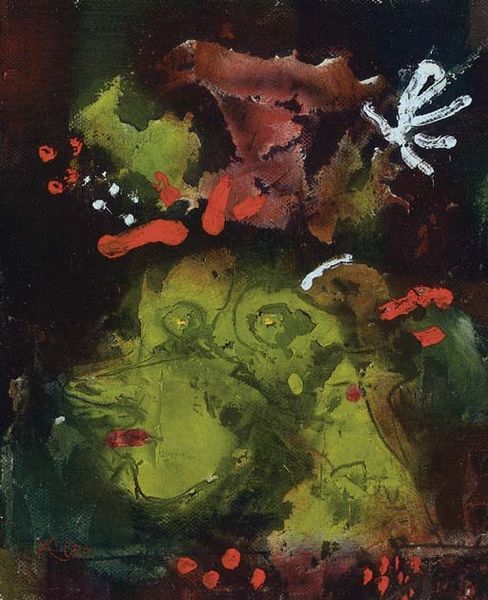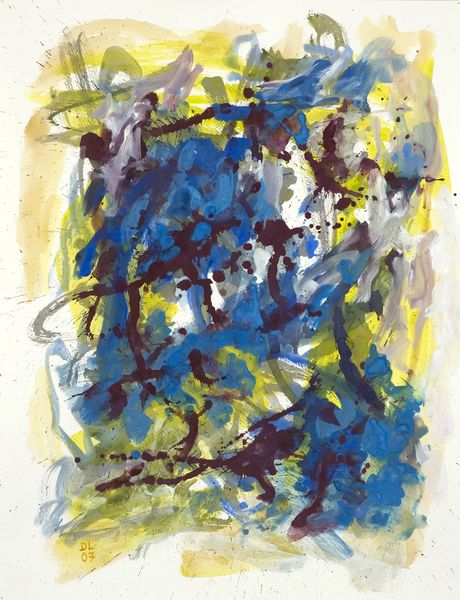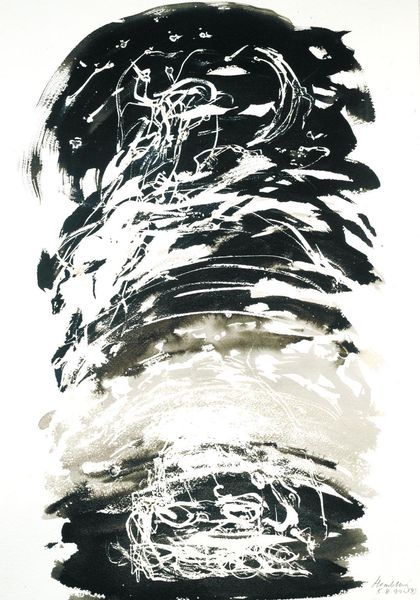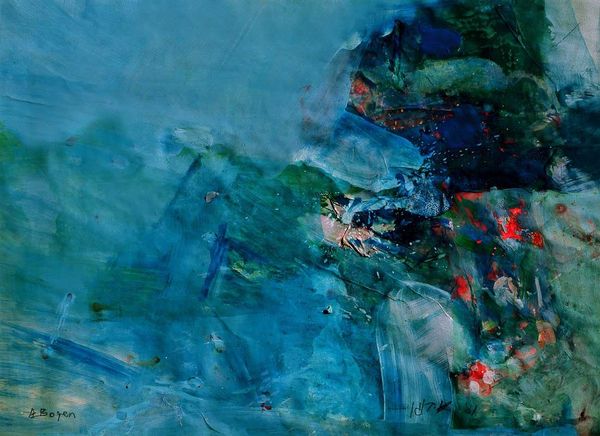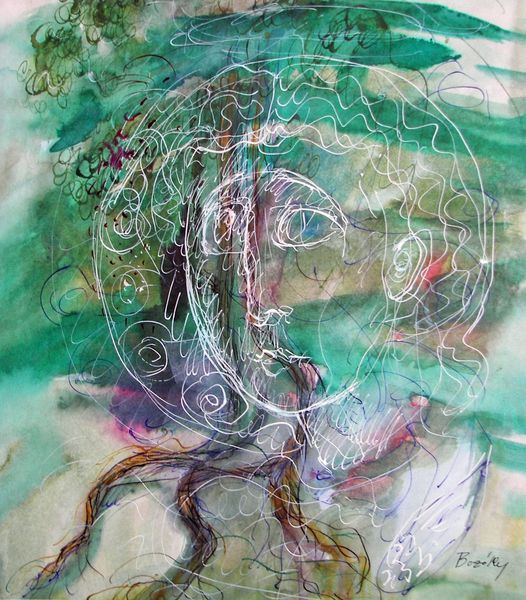
drawing, watercolor, pastel
#
drawing
#
organic
#
landscape
#
watercolor
#
abstraction
#
pastel
#
watercolor
Copyright: Tetyana Yablonska,Fair Use
Editor: So, this is Tetyana Yablonska's "Dusk. Lily-of-the-Valley" from 2005, done with watercolor and pastel. It has such a dreamy quality, almost like a faded memory. What strikes you most about it? Curator: Immediately, the pervasive green speaks volumes. Post-Soviet Ukrainian art, especially around this time, often grappled with themes of national identity and belonging. Is this color meant to signify nature, or something deeper, perhaps the "green thought in a green shade," a retreat from some harsh reality? Do you think the abstract nature enhances or detracts from any potential socio-political message? Editor: That’s interesting! I hadn’t considered that. The abstraction definitely makes it more ambiguous, maybe allowing for multiple interpretations instead of a direct statement. Do you think the “lily-of-the-valley” aspect is relevant here, or more of a personal reference? Curator: Given that Yablonska was a prominent figure in Ukrainian art during the Soviet era, known for her social realism, this shift toward abstraction in her later work could represent a liberation, or a personal reassessment of previous artistic convictions. The title juxtaposed with the abstraction opens space to examine art’s evolving public role post-Soviet era, don't you think? Perhaps even commenting on previous roles of censorship in the Ukrainian landscape? Editor: Definitely. It's like she's whispering secrets now, rather than shouting pronouncements. Curator: Precisely. It is easy to view art through history, what do you learn looking through personal experience, what emotions does this imagery evoke in you personally? Editor: I can relate with that tension between different worlds that's fascinating and valuable when viewing this piece! Curator: I agree. Seeing how personal and socio-political elements interact helps unlock richer appreciation.
Comments
No comments
Be the first to comment and join the conversation on the ultimate creative platform.


